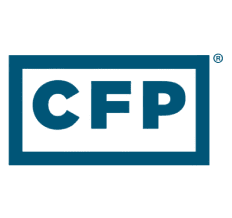Ways to Potentially Avoid Poor Sequence of Returns
By The LRVS Advisory Group
May 2, 2023
The stock market can be an intimidating place and making decisions about investments can be overwhelming. One important concept to understand is the Sequence of Returns, which can have a major impact on your investment performance. This blog post will explain the concept of Sequence of Returns, how it can affect your investments, and strategies to mitigate the impact of this concept.
Sequence of returns refers to the order in which returns are earned on a particular investment.1 The sequence in which returns are realized can have a large impact on the overall performance of an investment portfolio over time Why is understanding sequence of returns important? Because it can have a significant impact on the overall performance of your portfolio over time.
SO, WHAT CAN YOU DO TO PROTECT YOURSELF FROM THE NEGATIVE IMPACT OF SEQUENCE OF RETURNS?
One strategy is to keep your money in the market for as long as possible. This strategy is particularly important during periods of volatility or market downturns. 2 When the market experiences a downturn, it’s natural to feel a sense of panic and want to sell your investments to avoid further losses.3 However, selling during a downturn can lock in your losses and significantly impact your long-term investment returns.4
Instead, it’s essential to remain calm and focused on your long-term goals. Historically, the stock market has always recovered from downturns, and investors who stay invested and patient tend to see the best returns over time.5
It’s also important to remember that timing the market is incredibly difficult, if not impossible. Trying to predict when the market will rise, or fall is a risky strategy that can result in missed opportunities and significant losses.
Investing in a diversified portfolio is another way to protect against poor sequence of returns. By diversifying across different asset classes and geographical regions, you can reduce the risk associated with any one particular asset or region experiencing a period of poor returns.
Rebalancing your portfolio is another way to protect against poor sequence of returns. Rebalancing your portfolio is the process of adjusting the allocation of your investments to bring it back to your original target asset allocation.6 The goal of portfolio rebalancing is to ensure that your portfolio is aligned with your investment objectives, risk tolerance, and overall financial plan. Over time, the performance of different assets within a portfolio may vary, which can cause the portfolio to become unbalanced. For example, if you started with a portfolio that was 50% stocks and 50% bonds, and the stock market performed well while the bond market did not, your portfolio may now be 60% stocks and 40% bonds. This could result in your portfolio taking on more risk than you originally intended. By rebalancing your portfolio periodically, you can ensure that you are not overexposed to any particular asset class or geographical region and that your portfolio remains well diversified.
Finally, utilizing Dollar Cost Averaging is another way to protect against poor Sequence of Returns. Dollar cost averaging (DCA) is an investment strategy that involves investing a fixed amount of money in a particular asset or security at regular intervals, regardless of the price or market conditions.7 This means that instead of investing a lump sum amount at one time, the investor spreads out their investment over a period of time. For example, an investor might decide to invest $100 every month in a particular stock, regardless of whether the stock price is going up or down. By investing a fixed amount of money at regular intervals over time, you can ensure that you are not putting all your money into the market at once and that you are taking advantage of market volatility by buying more shares when prices are low and fewer shares when prices are high.8
In conclusion, understanding sequence of returns is critical when it comes to investing in the stock market. While it can be challenging to predict the future performance of the market, staying invested and focused on your long-term goals is the best way to protect yourself from the negative impact of sequence of returns. Work with a financial advisor to develop a diversified investment strategy that aligns with your goals and risk tolerance and stay invested for as long as possible to see the best returns over time.
Sources
- 1https://www.annuity.org/retirement/risks/market/sequence-of-return/#:~:text=Return%20sequence%2C%20or%20return%20sequencing,10%2Dyear%20period%20following%20retirement.
- 2https://www.investopedia.com/articles/investing/052216/4-benefits-holding-stocks-long-term.asp#:~:text=One%20of%20the%20main%20benefits,fees%20you%20have%20to%20payhttps://www.investopedia.com/articles/basics/10/how-to-avoid-emotional-investing.asp https://www.investopedia.com/articles/investing/021116/3-reasons-not-sell-after-market-downturn.asp
- 3https://www.mfs.com/content/dam/mfs-enterprise/mfscom/sales-tools/sales-ideas/mfse_resdwn_fly.pdf
- 4https://www.investopedia.com/terms/r/rebalancing.asp
- 5https://www.investopedia.com/terms/d/dollarcostaveraging.asp https://www.investopedia.com/terms/d/dollarcostaveraging.asp
*Disclaimer:
This article is provided by Fortis Capital Advisors, LLC (“Fortis Capital Advisors” or the “Firm”) for informational purposes only. Investing involves the risk of loss and investors should be prepared to bear potential losses. Past performance may not be indicative of future results and may have been impacted by events and economic conditions that will not prevail in the future. No portion of this article is to be construed as a solicitation to buy or sell a security or the provision of personalized investment, tax, or legal advice. Certain information contained in this report is derived from sources that Fortis Capital Advisors believes to be reliable; however, the Firm does not guarantee the accuracy or timeliness of such information and assumes no liability for any resulting damages.
Any references made regarding the taxable nature of your investments should not be construed as tax advice. Fortis Capital Advisors, LLC is not a tax advisory firm; therefore, any tax decisions or assumptions should be made/verified with your tax professional.
Projected savings presented may vary depending on client longevity, and performance of assets over time.
This article is the sole opinion of this individual and is not indicative of the firm’s belief.







